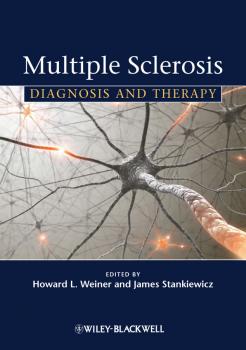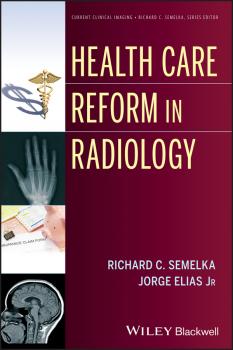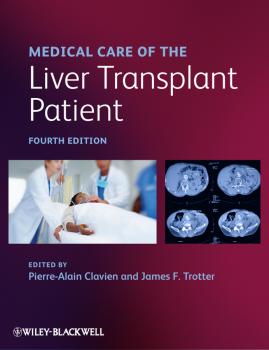ТОП просматриваемых книг сайта:
Медицина
Различные книги в жанре Медицина, доступные для чтения и скачиванияАннотация
The management of non-ST segment elevation acute coronary syndromes (NSTE-ACS) has rapidly evolved over the last few years and many guidelines have been provided and already updated. This book is based on the latest ESC Guidelines and reports the current knowledge in NSTE-ACS, together with the most recent therapeutic options and the different strategies that can be applied according to the clinical status of patients. International experts address the different aspects of NSTE-ACS and bring useful information to clinicians, interventionalists and surgeons involved in the difficult management of these patients. The ESC Education Series This book is part of the ESC Education Series. The series is designed to provide medical professionals with the latest information about the understanding, diagnosis and management of cardiovascular diseases. Where available, management recommendations are based on the established European Guidelines, which encompass the best techniques to use with each cardiac disease. Throughout the series, the leading international opinion leaders have been chosen to edit and contribute to the books. The information is presented in a succinct and accessible format with a clinical focus.
Аннотация
The Latest Applications For Cellmechanism Research in Drug Discovery Designed to connect research on cell mechanisms with the drug discovery process, Therapeutic Targets: Modulation, Inhibition, and Activation introduces readers to a range of new concepts and novel approaches to drug screening and therapeutic drug targeting to help inform future avenues of drug research. Highly topical, this accessible edited volume features chapters contributed by respected experts from around the globe. The book helps postgraduate students and professional scientists working in academia and industry understand the molecular mechanisms of pharmacology, current pharmacological knowledge, and future perspectives in drug discovery, focusing on important biochemical protein targets and drug targeting strategies for specific diseases. Examining the pharmacology of therapeutically undefined targets and their potential applications, it includes chapters on traditional therapeutic targets, including enzymes (phosphodiesterases and proteases), ion channels, and G protein-coupled receptors, as well as more recently identified avenues of exploration, such as lipids, nuclear receptors, gene promoters, and more. Since different diseases require different targeting techniques, the book also includes dedicated chapters on strategies for investigating Alzheimer's, diabetes, pain, and inflammation treatments. Concluding with a cross-sectional look at new approaches in drug screening, Therapeutic Targets is an invaluable resource for understanding where the next generation of drugs are likely to emerge.
Аннотация
Wildlife Forensics: Methods and Applications provides an accessible and practical approach to the key areas involved in this developing subject. The book contains case studies throughout the text that take the reader from the field, to the lab analysis to the court room, giving a complete insight into the path of forensic evidence and demonstrating how current techniques can be applied to wildlife forensics. The book contains approaches that wildlife forensic investigators and laboratory technicians can employ in investigations and provides the direction and practical advice required by legal and police professionals seeking to gain the evidence needed to prosecute wildlife crimes. The book will bring together in one text various aspects of wildlife forensics, including statistics, toxicology, pathology, entomology, morphological identification, and DNA analysis. This book will be an invaluable reference and will provide investigators, laboratory technicians and students in forensic Science/conservation biology classes with practical guidance and best methods for criminal investigations applied to wildlife crime. Includes practical techniques that wildlife forensic investigators and laboratory technicians can employ in investigations. Includes case studies to illustrate various key methods and applications. Brings together diverse areas of forensic science and demonstrates their application specifically to the field of wildlife crime. Contains methodology boxes to lead readers through the processes of individual techniques. Takes an applied approach to the subject to appeal to both students of the subject and practitioners in the field. Includes a broad introduction to what is meant by 'wildlife crime', how to approach a crime scene and collect evidence and includes chapters dedicated to the key techniques utilized in wildlife investigations. Includes chapters on wildlife forensic pathology; zooanthropological techniques; biological trace evidence analysis; the importance of bitemark evidence; plant and wildlife forensics; best practices and law enforcement.
Аннотация
Multiple Sclerosis: a complex disease requiring sophisticated management Multiple Sclerosis poses labyrinthine challenges. There is no blood test to rely on for diagnosis; clinical acumen is essential. Yet an effective diagnosis only takes you part of the way: treatment offers further enigmas. The MS treatment landscape is complicated, and will become even more so with time. Multiple Sclerosis: Diagnosis and Therapy is the map you need to navigate this maze. Written and edited by leaders in the field, it guides you towards effective and positive choices for your patients. The diagnosis section provides state-of-the-art thinking about pathogenesis. With clear coverage of biomarkers, genetics, and imaging, it presents a coherent framework for making the correct diagnosis. The management section comprehensively covers current and future treatments to steer you through the many options for • Symptom management • Cognitive dysfunction • Depression and other mental health issues ‘Top Tips’ throughout provide the practical guidance you need for the best management of your patients. Multiple Sclerosis: Diagnosis and Therapy should be on the bookshelf of anyone who treats patients with multiple sclerosis.
Аннотация
The Health Care Data Guide is designed to help students and professionals build a skill set specific to using data for improvement of health care processes and systems. Even experienced data users will find valuable resources among the tools and cases that enrich The Health Care Data Guide. Practical and step-by-step, this book spotlights statistical process control (SPC) and develops a philosophy, a strategy, and a set of methods for ongoing improvement to yield better outcomes. Provost and Murray reveal how to put SPC into practice for a wide range of applications including evaluating current process performance, searching for ideas for and determining evidence of improvement, and tracking and documenting sustainability of improvement. A comprehensive overview of graphical methods in SPC includes Shewhart charts, run charts, frequency plots, Pareto analysis, and scatter diagrams. Other topics include stratification and rational sub-grouping of data and methods to help predict performance of processes. Illustrative examples and case studies encourage users to evaluate their knowledge and skills interactively and provide opportunity to develop additional skills and confidence in displaying and interpreting data. Companion Web site: www.josseybass.com/go/provost
Аннотация
This is a book for any care provider – from advanced students and nurses to residents and even specialists – who needs to master the interpretation of ECGs, especially while «on the spot» at the point of care. This easy-to-use, visual guide takes a novel approach, foregrounding the visual clues or «keys» that readers can learn to recognize in ECGs and thus make rapid decisions about next steps at the point of care. The comparatively minimal text focuses on «must-know» information about the underlying cause of ECG abnormalities. This title is also available as a mobile App from MedHand Mobile Libraries. Buy it now from Google Play or the MedHand Store.
Аннотация
The first book-length treatment of the absolutely essential topic of U.S. health care reform for imaging specialists This latest volume in the Current Clinical Imaging series offers all professionals involved with imaging a cogent, concise discussion of major issues related to health care reform from the perspective of fellow imaging specialists. It provides radiologists with a solid footing in understanding where they are now and where they can expect to be in the evolution of health care reform over the next ten years. Presenting an excellent balance of clinical and health care policy issues, Health Care Reform in Radiology reinforces the central role of health promotion and preventive medicine in U.S. health care systems while offering an international perspective on the subject. Topical coverage includes evidence-based outcomes for health care delivery, the impact of the determination of imaging tests' effectiveness, patient safety, medicolegal reform, reimbursement issues, and universal healthcare benefits and challenges. Health Care Reform in Radiology presents a program to: Enhance patient safety and quality of care Anticipate new or revised standards for all imaging modalities Suggest the more appropriate use of imaging based on the latest clinical evidence Discuss the evolving regulations defining the training required to perform imaging procedures Encourage career-long learning (CME, maintenance of certification, etc.) Show fellow radiologists how to provide added value for patients and referring physicians Developed and written by two top experts in the field, this is an ideal book for all professionals involved with imaging as well as physician groups that depend on radiology.
Applications of Ion Chromatography in the Analysis of Pharmaceutical and Biological Products - Bhattacharyya Lokesh
Аннотация
This is a comprehensive source of information on the application of ion chromatography (IC) in the analysis of pharmaceutical drugs and biologicals. This book, with contributors from academia, pharma, the biotech industry, and instrument manufacturing, presents the different perspectives, experience, and expertise of the thought leaders of IC in a comprehensive manner. It explores potential IC applications in different aspects of product development and quality control testing. In addition, an appendix section gives information on critical physical and chromatographic parameters related to IC and information on current manufacturers of IC systems, columns, and other components.
Аннотация
This book builds on the success of previous editions, once again providing hepatologists the most current clinical guide on how to best treat the liver transplant recipient. With an international mix of experienced contributors, this new edition highlights initial indication and selection of the potential recipient, management of the donor organ, post-operative complications in the patient through to acute recovery, long-term follow-up, and continued health. This provides the user a complete guide to the correct clinical management of both the recipient and the donor organ through all stages of transplantation.
Аннотация
Clinical Dilemmas in Liver Cancer follows the successful format of the other books in the Clinical Dilemmas series, with each chapter focused on a specific dilemma, or issue facing doctors in their day-to-day job, and providing them with practical clinical information and help to better assessment and treat their patients – in this case patients suffering from liver cancer, the third commonest cancer in terms of mortality worldwide. Chapters feature up-to-date information on the basic mechanisms, epidemiological risk factors, screening and surveillance strategies, diagnosis and treatment. It is an extremely practical and clinically-orientated book, and as most patients around the world present with advanced disease, a main focus is on the most recent advances allowing early diagnosis and use of locoregional and systemic therapy, surgery, transplantation and combination therapies. Each chapter is authored by an international expert in the relevant area.










